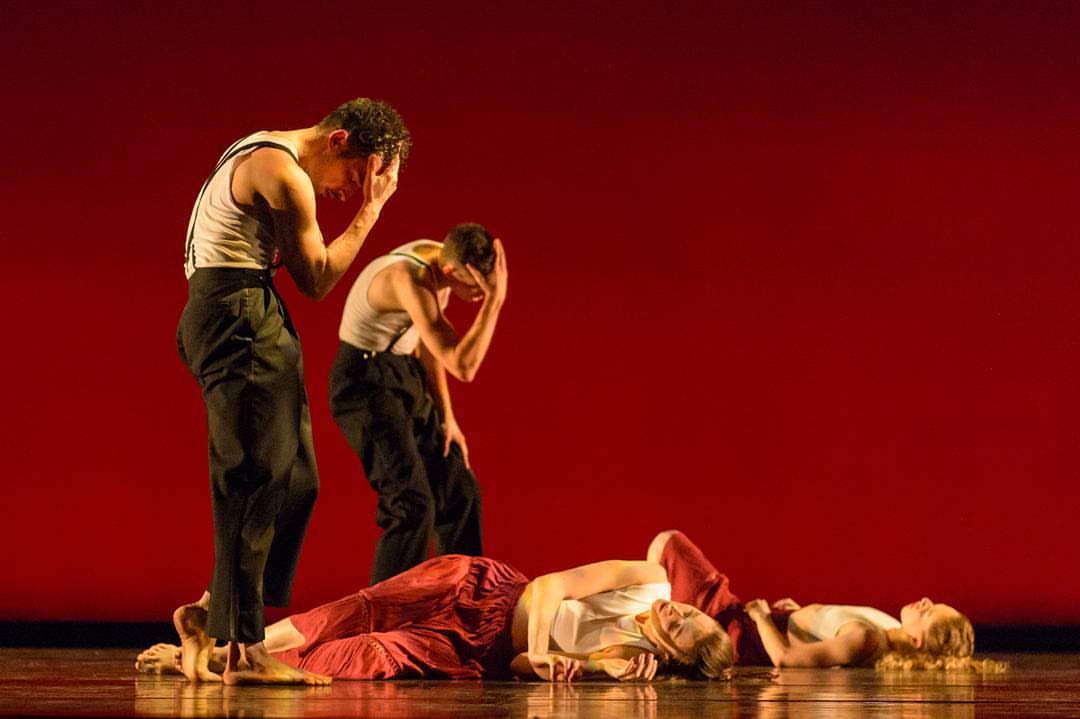If you missed ChitraKaavya Dance’s presentation of Samarpanam: A sublime offering, you made a mistake.
The area non-profit regularly creates and performs Bharatanatyam, a classical Indian form, but also presents guest artists including Renjith and Vijna last night in the Eccles Regent Street Black Box. The duo, described as partners in dance as well as life, offered a stunning series of duets and solos. ChitraKaavya founder Srilatha Singh described beautifully the way in which she aims for these performances to not only share and preserve Indian heritage but also to form cross cultural relationships. In all her performances, Singh ensures that the form of Bharatanatyam, movement as visual poetry, is also described through program notes and onstage narration which bridge the gap for audience members who may be new to classical Indian dance.
This narration describes how the first piece, Panchadeva Stuthi, is an invocation for five Hindu deities and that the composition (by Professor C.V. Chandrasekhar) uses both abhinaya (expression) and nritta (physical movement) within a single phrase of music. Without this knowledge, all of these facets are still revealed through the dances as both performers offer inherent reverence through the slightest rotation of an ankle, a settling within their chest, and the soft fluttering of Renjith’s fingertips.
Other works offer different narratives and, while Devaranaama - Chikkavane Ivanu would be enjoyable without being spoken, it is nice to decipher from my seat the way in which Vijna interprets and physicalizes the poetry of Purandara Daasar. Vijna’s onstage pre-teaching of specific gestures allowed me to fully enjoy the pranks of Little Krishna as he disrupts the lives of two young maidens.
This solo was followed by another composition dedicated to facial expression and performed by Renjith. At this time I’d like to implore all regional modern dancers working with facial expressions to take several seats. In fact, take all the seats because Renjith is an expert at revealing the ways that our face not only carries expression but also the way that expression must be driven from, and exist in relationship to, other parts of the body. Part of this is built into the composition by Indira Kadambi, but other parts are because of his own performance; which is virtuosic beyond measure and evokes physical and emotional textures in complex rhythmic relationship to the music.
During the entire concert I was aware how different the audience is from other concert dance productions in our city, and it made me think about the way that cultural forms are often treated in both training and performance settings in the United States (as a workshop elective, a supplementary technique, a community practice). With that context, it’s easy to dissociate how much more similar Bharatanatyam is to ballet than it is to the other cultural forms with which it’s frequently grouped.
When I was a child my family had season tickets to the ballet. Part of the experience was watching the dancing but another, much bigger, part was how we dressed up, ate shrimp puffs in the founder’s room during intermission, and talked to my grandmother’s friends. At Samarpanam, I was able to get a window into the Indian heritage not just of the art form but also the nature of theater-going. Turning around to see children dressed in their nicest clothes, alternating between watching intently and lounging on their parents or flipping through the program, I could see that there was much in common between this performance and my own formative experiences of viewing dance.
This comparison even extends to any critique or curiosity some new audiences may have of the work. When I watch ballet, I often tire of the number of solos and pas de deux between what I’m really after, a corps de ballet moving in idyllic unison. In Bharatanatyam, this ebb and flow is similar -- there are those who may revel in the small and specific solos, but others who (like me) wait for the rush of compelling rhythmic duets that rise at just the right moment in each piece. While the ultimate objectives of the two forms are different (one extends and balances, the other grounds and subtly shifts), the structure is always going to be traditionally clear and presentational of its respective, centuries-old objective.
In the case of Samarpanam, these objectives are matched with lovely and engaging performers who share their traditions with revelatory and expressive joy.
Ashley Anderson directs loveDANCEmore programs as part of her non-profit, “ashley anderson dances.”
Administrator's Note: To view a recent cross-pollination of the forms mentioned in this review, you may visit Chitrakaavya Dance's Facebook page for video footage of a workshop Renjith and Vijna recently taught for Ballet West Academy students.










